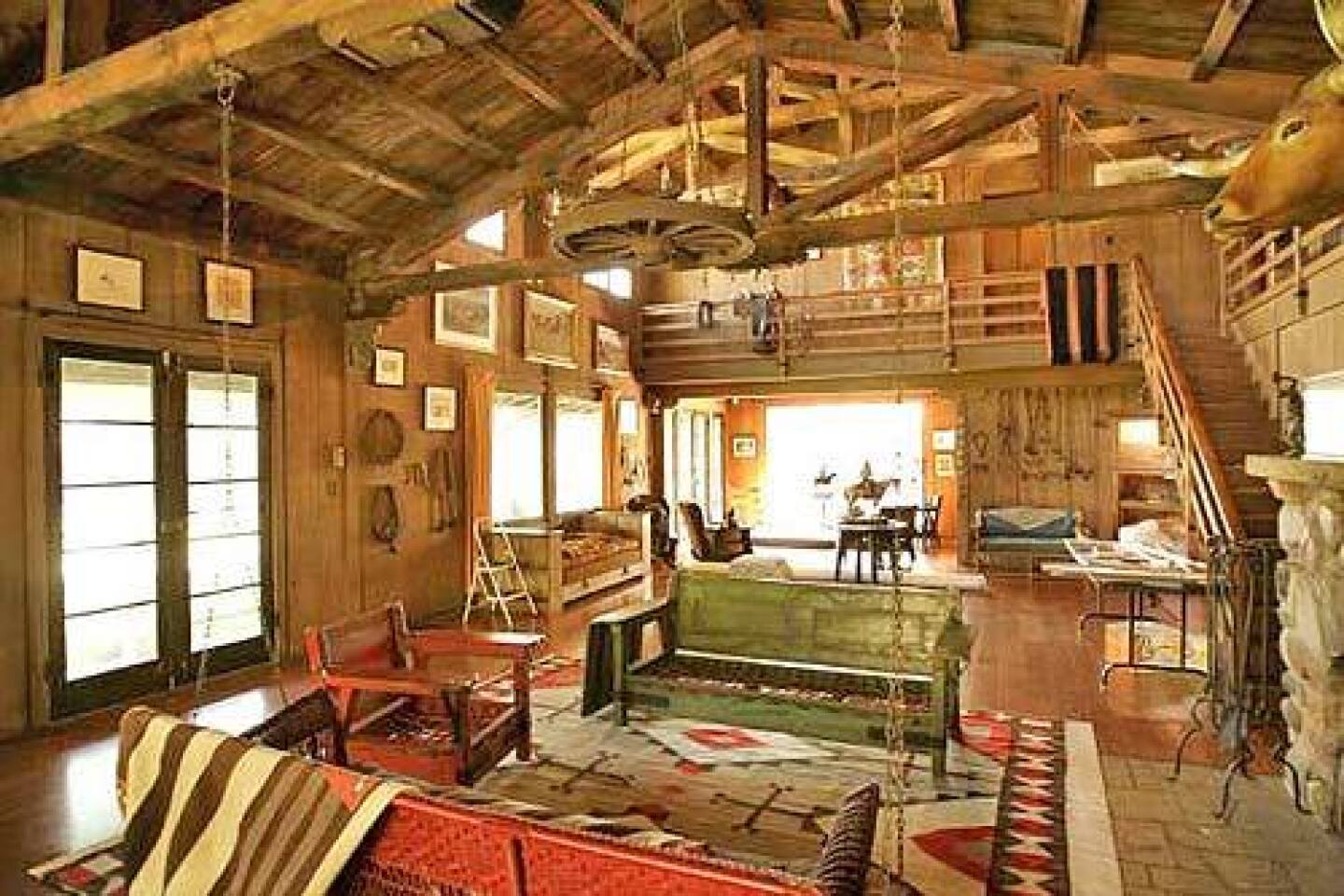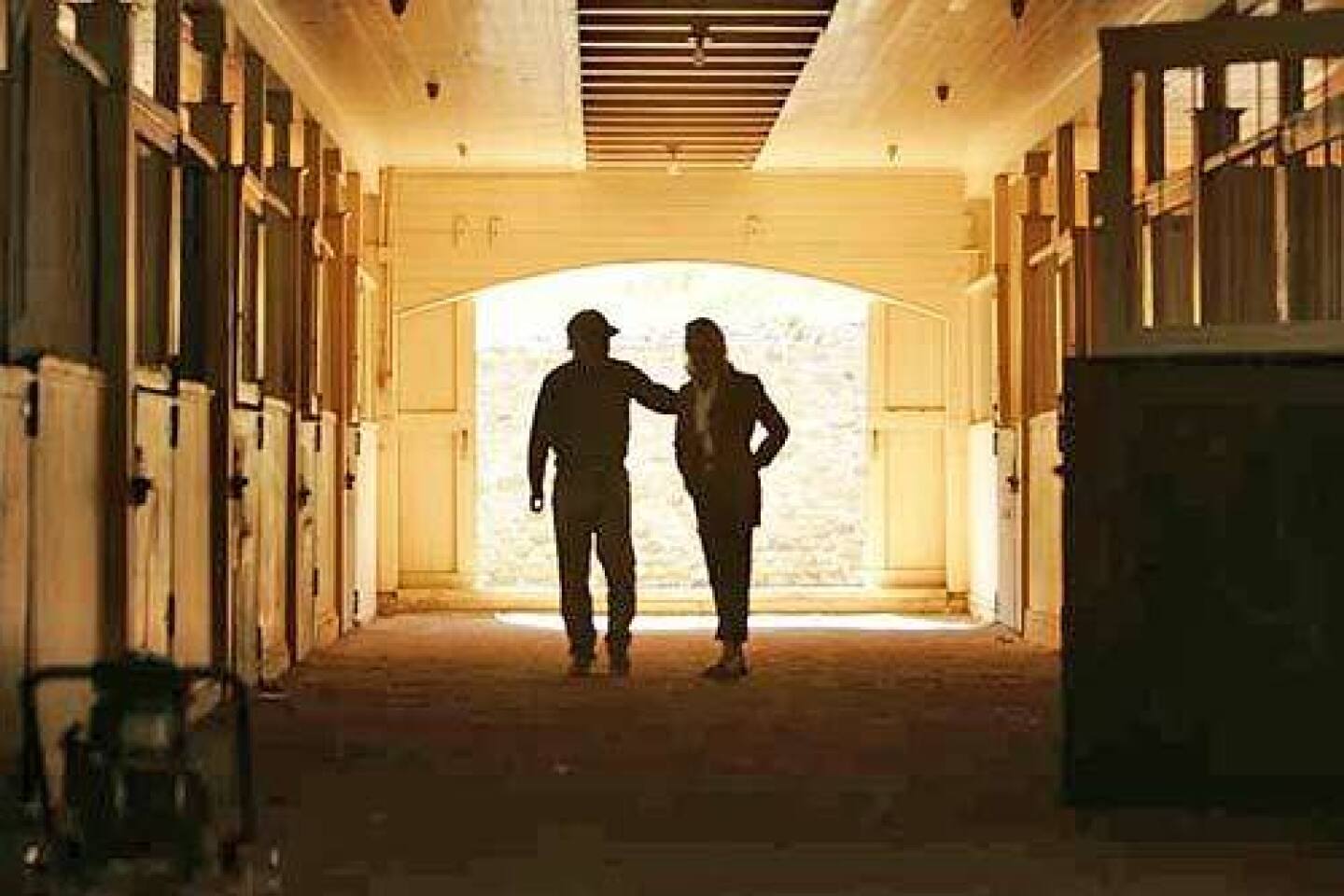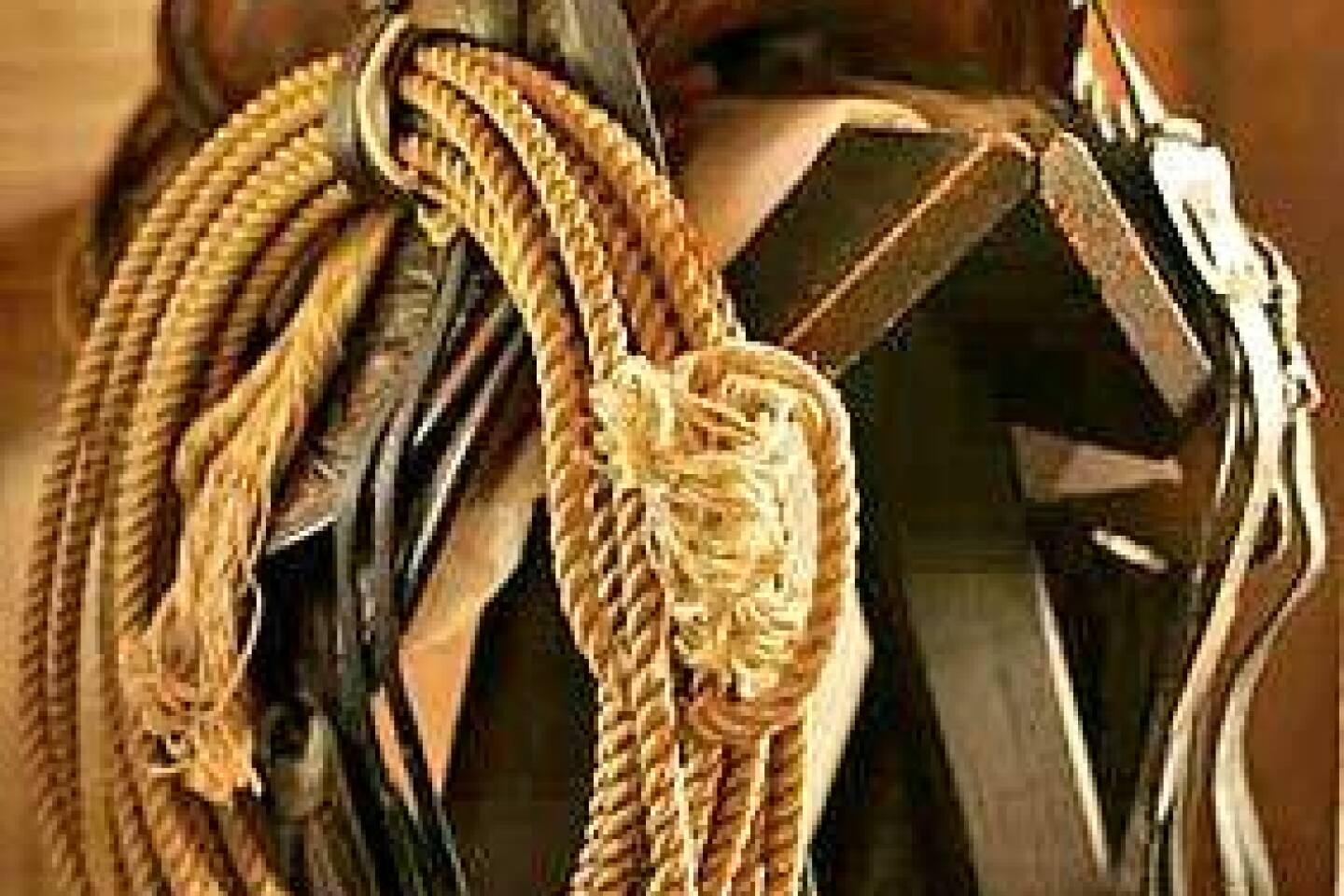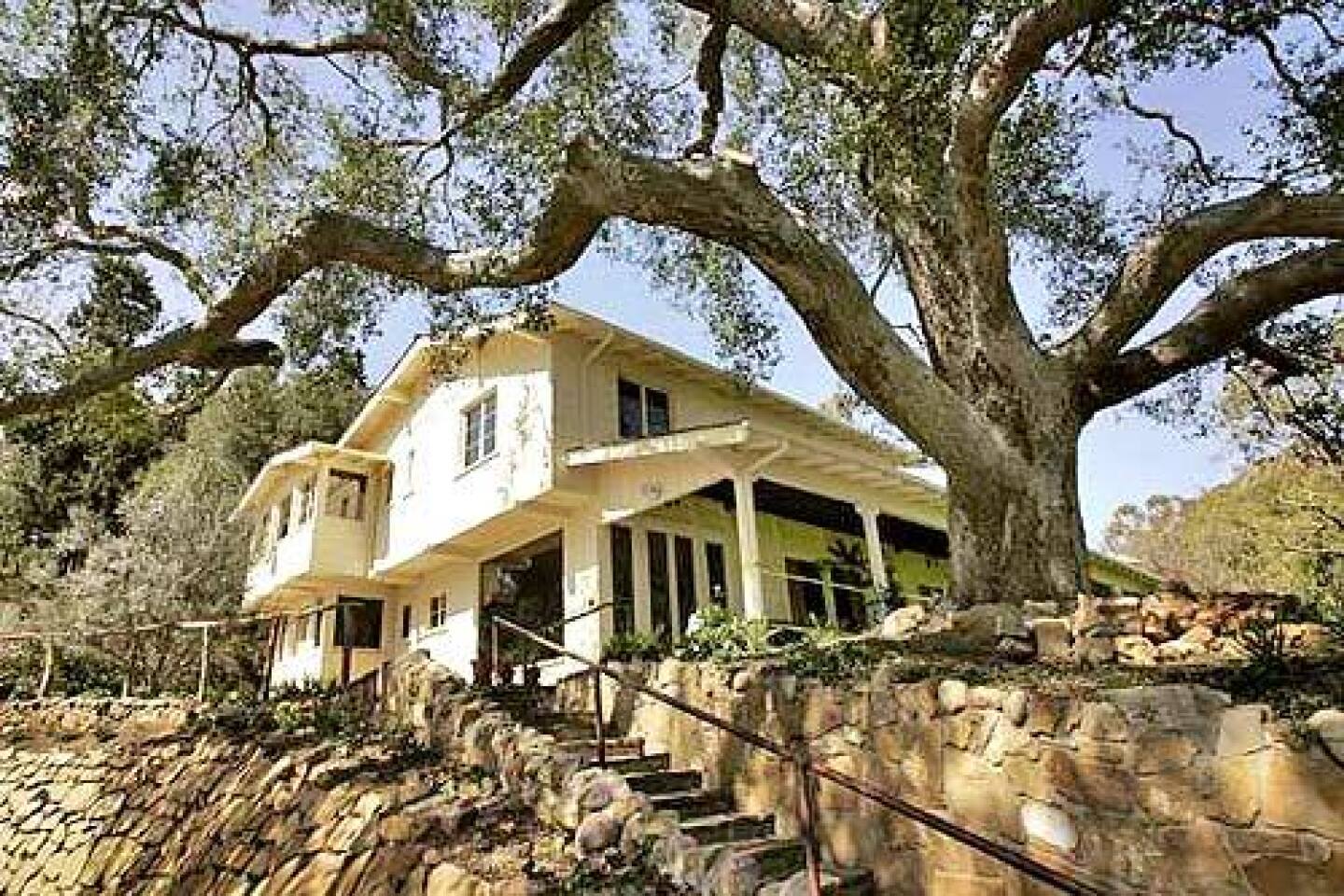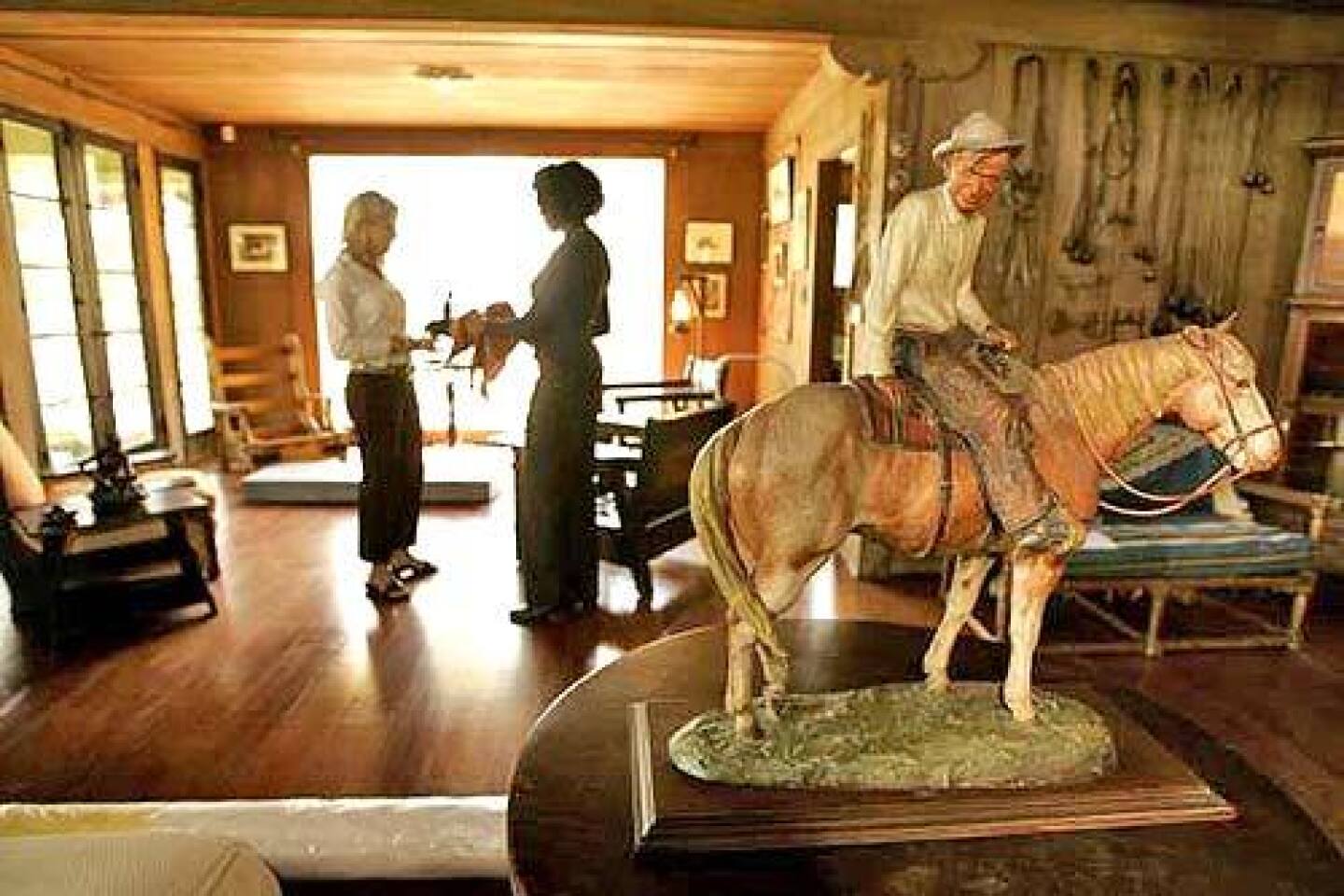Western Classic Restored
The first-edition books inscribed by the likes of Theodore Roosevelt, Helen Keller and Harry Houdini are back on the shelves. The cowboy-and-Indian paintings and etchings by Charles Russell and Edward Borein are once again hanging on the walls. The custom Monterey couches and chairs made in the 1930s by Mason Manufacturing of Los Angeles have been arranged just so in the dining and living rooms.
The only thing missing is Rogers’ stuffed roping calf. It’s off getting new ears from the taxidermist.
After a three-year, $5-million restoration, Will Rogers’ ranch house in Pacific Palisades is ready for its close-up. The house, where the cowboy humorist, actor and philanthropist lived until his death in a 1935 plane crash, will reopen to visitors Saturday.
To rededicate the 31-room house in style, the California Department of Parks and Recreation, the Rogers family and the nonprofit Will Rogers Cooperative Assn. are planning a Western-style public celebration, complete with trail rides, trick-roping and polo demonstrations and music by the Lost Canyon Rangers.
The house is the centerpiece of Will Rogers State Historic Park, a 186.5-acre parcel that Rogers’ widow, Betty, deeded to the state in 1944. With a new bedroom here, and a new sunroom there, the ranch house grew over the years from a simple six-room weekend cabin into a year-round residence.
Built in a board-and-batten style, the cream-colored house sits on a gentle slope between the “barn that jokes built,” where Rogers kept his horses, and the polo field where he and such celebrities as Clark Gable and Spencer Tracy set them to galloping.
One aim of the celebration, of course, is to show off the painstakingly restored house. Another is to lure back the public. The number of visitors dropped dramatically in recent years as the house and grounds fell into disrepair and then as the state and volunteers worked to restore the structures and the grounds.
“We just want to put him back on the map,” said Jennifer Rogers-Etcheverry, Rogers’ great-granddaughter who lives in Bakersfield. “The house being closed has taken him off the map, even to the locals in the Palisades who haven’t been able to enjoy the park as they used to.”
To the family and Rogers’ admirers, this new lease on life for the ranch house and the park was long overdue. Betty Rogers’ deed to the state came with conditions: The state would maintain the structures and grounds as a memorial to Rogers. If the property were not properly preserved, it would revert to the family.
In 1952, the state authorized horse boarding at the park. Over the years, pipe stalls and sheds rose in pastures and canyons to accommodate the steeds of boarders who included Arnold Schwarzenegger (not yet governor) and his wife, Maria Shriver, as well as Billy Crystal and Tom Cruise and Nicole Kidman. Meanwhile, much of the rest of the park fell into disrepair. The public complained that the park had become the playground of a few influential people.
Five years ago, Chuck Rogers, a grandson of the humorist, threatened to sue the parks department contending that the property had been neglected.
Randy Young, a local historian who had befriended the Rogers family, began an effort to end the private boarding.
After months of wrangling, the state halted the program and agreed to invest in an extensive restoration.
During a recent tour, Taylor Louden, the project architect, said that it was a challenge to accommodate all the work that needed to be done with the state’s relatively limited budget. Under his guidance, construction workers dismantled walls and lifted floorboards. They installed new drainage pipes and heating and cooling equipment. They added walls to protect the house from earthquake damage.
Once musty and damp, the house now feels dry and airy.
Louden and Rochelle Nicholas-Booth, the state parks curator at the house, studied dozens of historic photos of the grounds and the home’s interior. “What we discovered was that over the years there had been many transformations,” Nicholas-Booth said.
Park staff had added textiles, saddles and other Western memorabilia to the main living-dining room, giving it a crowded look. The look now is comfortable and lived-in but less cluttered.
“This is the closest to how we feel they might have lived here, without being exact,” Nicholas-Booth said. She acknowledged that there have been concessions to historical accuracy. Hanging in the dining room are large oil portraits of Betty and Will, painted after the humorist’s death.
Rogers was an inveterate collector, and friends, including artists Russell and Borein, showered him with gifts.
The collection includes ropes, saddles, bolas from Argentina, an enormous Apache basket and dozens of Native American rugs and blankets. Betty Rogers often hung rugs on the walls behind paintings and etchings.
To freshen the rooms and help preserve precious mementoes, Nicholas-Booth plans to rotate artworks, rugs and other artifacts.
Visitors will be able to tour the main living-dining room, the library-music room, the kitchen, Rogers’ upstairs study and the bedroom of son Will Jr. Later, visitors will be allowed to tour the master bedroom, with its twin beds and a pair of Rogers’ black leather Justin cowboy boots, polished to a high sheen.
Rogers was, after all, a true cowboy. He was born in 1879 in Indian Territory (now Oklahoma) to parents descended from mixed-blood members of the Cherokee Nation. As a boy, he honed his roping skills while herding Texas longhorns on his father’s ranch.
Rogers first dabbled in show business doing rope tricks in a Wild West show. From there, he moved to vaudeville, the Ziegfeld Follies and Ziegfeld’s Midnight Frolic, where his droll observations about politics and international relations made him a star.
By 1934, he was the movie industry’s top box-office draw. He also wrote a daily column that appeared on the front page of many newspapers.
Over the years, he traveled the world to raise money for flood, drought and earthquake victims. Rogers was a favorite of presidents and paupers.
In 1935, Rogers’ death in a small plane, piloted by aviator Wiley Post, sent the nation into collective grief. Flags flew at half-staff, and 50,000 mourners filed by his casket in Glendale.
Amid his hectic life, his Palisades ranch had been his peaceful Shangri-La.
He designed the entire layout, including riding trails through the Santa Monica Mountains. He oversaw the planting of every eucalyptus and oak tree.
Young and others are working to restore the grounds to the way they looked when Rogers lived there. Along the path to the barn, gardeners have planted black acacia trees, sea lavender and sage.
“Will Rogers was our boss on this restoration,” Young said.
For Young, the crowning moment Saturday will be when he and other volunteers, using antique hammers, install a hitching post right below the picture window in Rogers’ upstairs study. It will be similar to the one where Rogers tied Soapsuds, one of his favorite horses. Young and others are still scrambling to complete restoration of the horse barn and to finish a new barn built to re-create one that was torn down.
Much remains to be done. “The family is so excited, but at the same time we’re also terrified the rest of the house will not get finished,” Rogers-Etcheverry said. Seeking to create a funding stream for future park maintenance and restorations, Rogers-Etcheverry and others are forming the nonprofit Will Rogers Ranch Foundation. It will take over some of the efforts of the Will Rogers Cooperative Assn., a nonprofit group that has worked to build awareness of the park.
Rogers-Etcheverry said some noted Hollywood families, including relatives of John Wayne and Roy Rogers, have expressed interest in donating and serving on the board.
The house, meanwhile, is ready to open its doors. Will would feel right at home.
More to Read
Sign up for Essential California
The most important California stories and recommendations in your inbox every morning.
You may occasionally receive promotional content from the Los Angeles Times.
